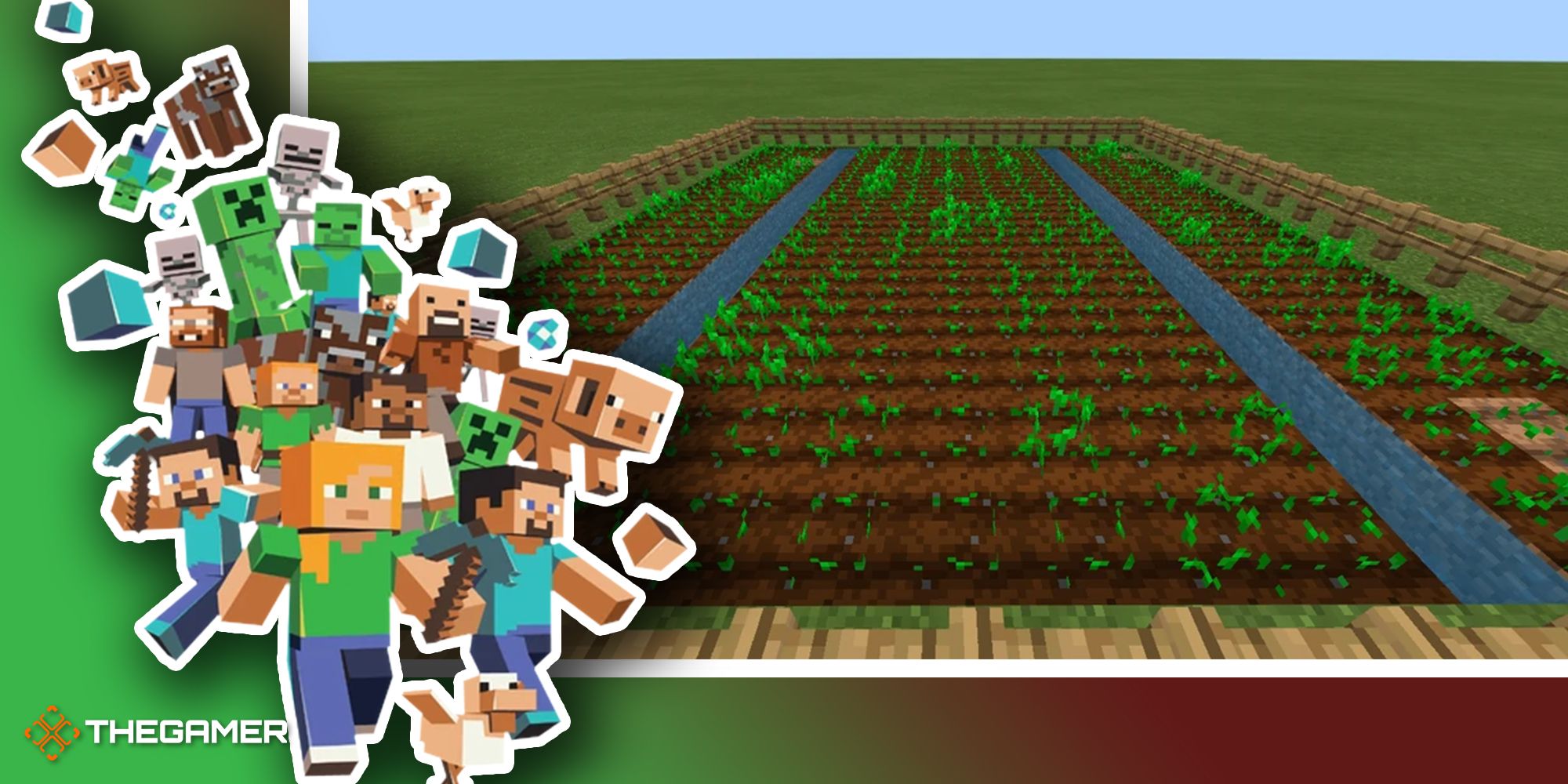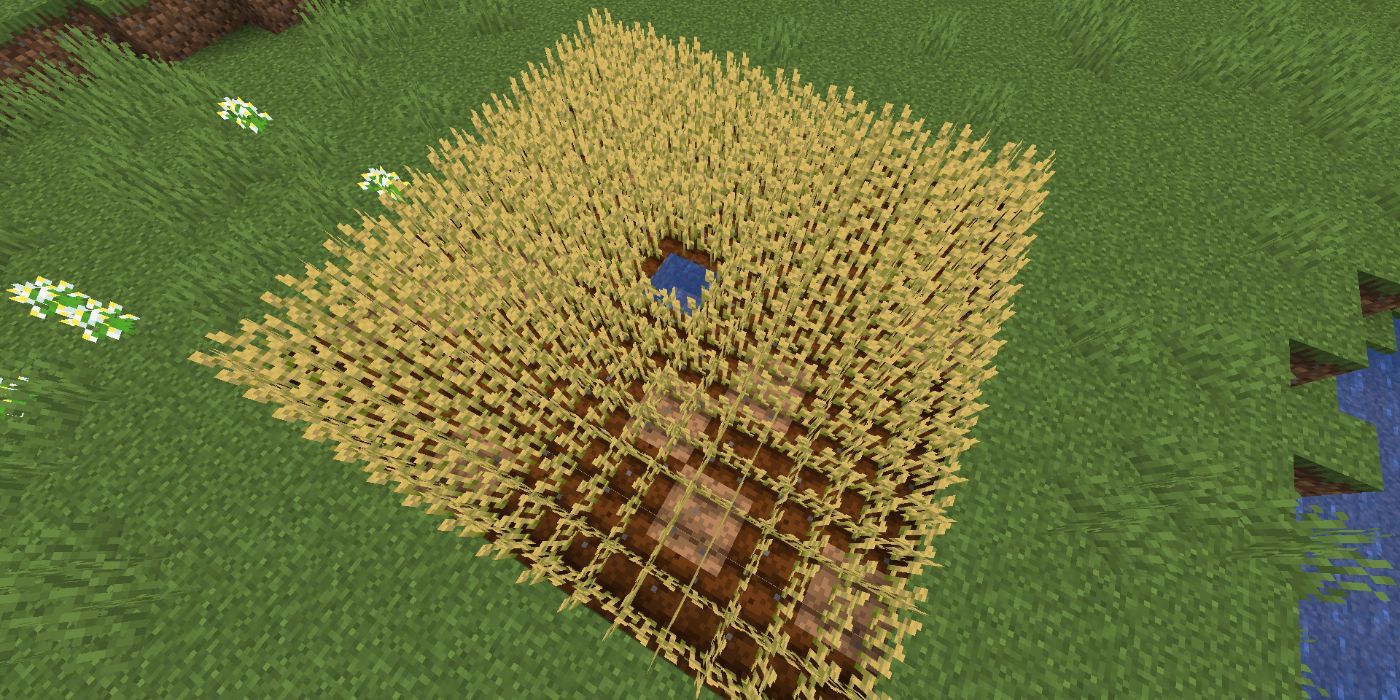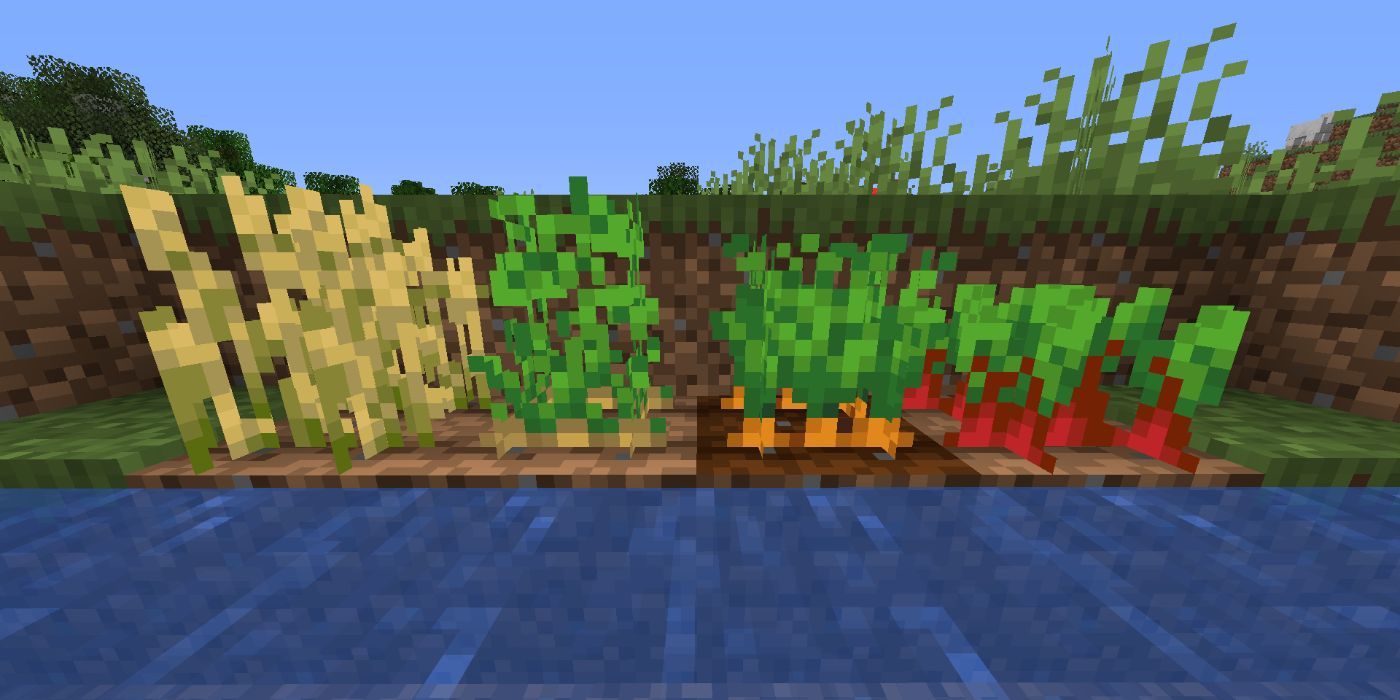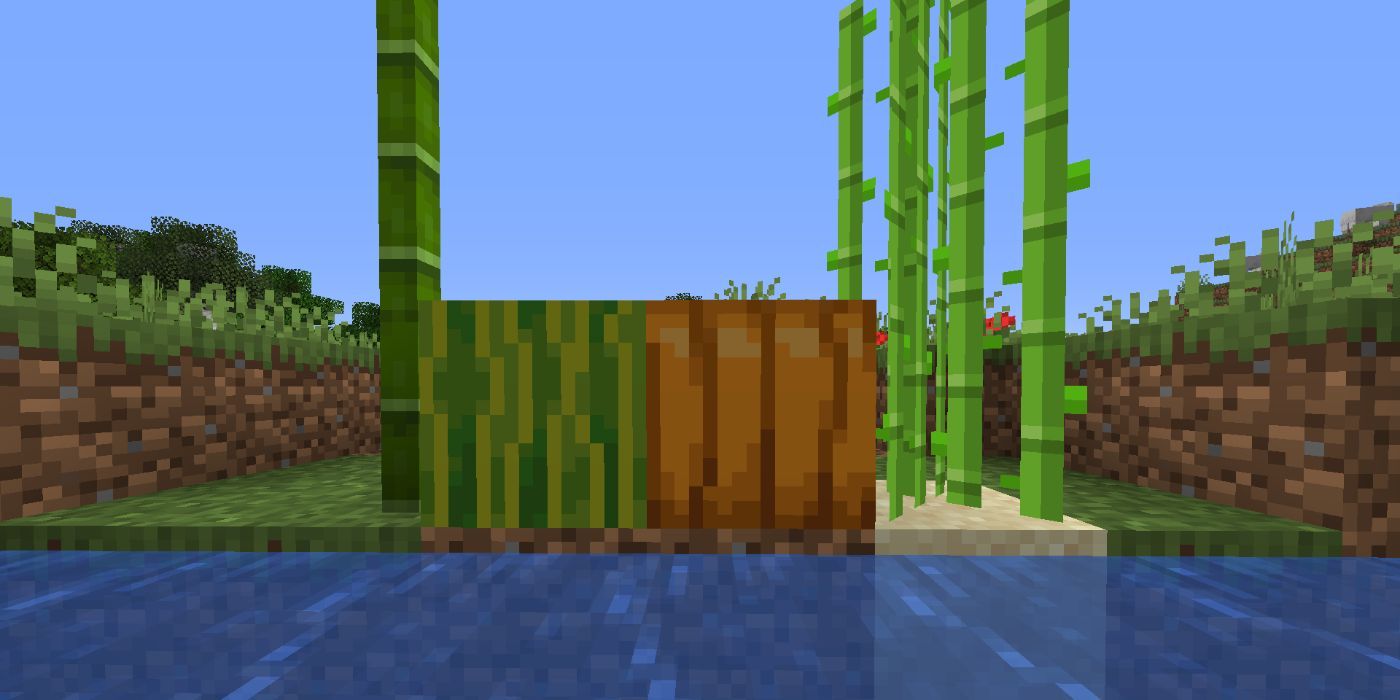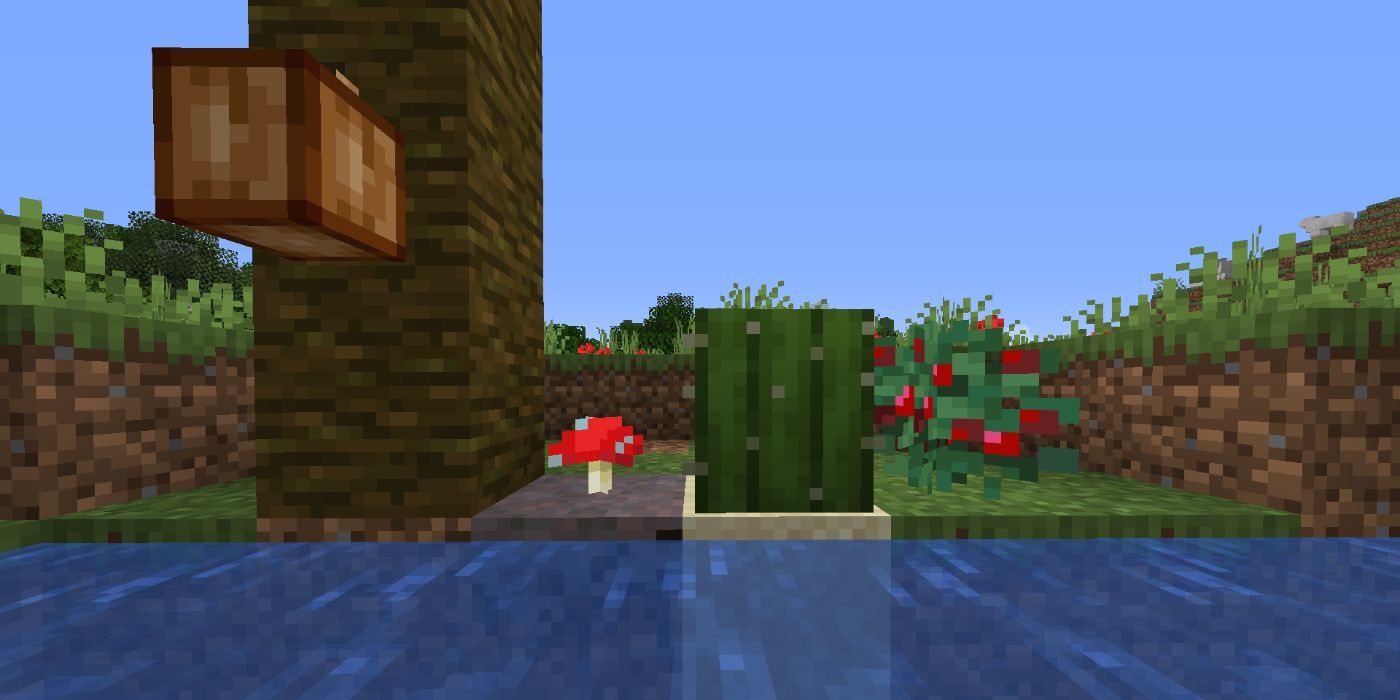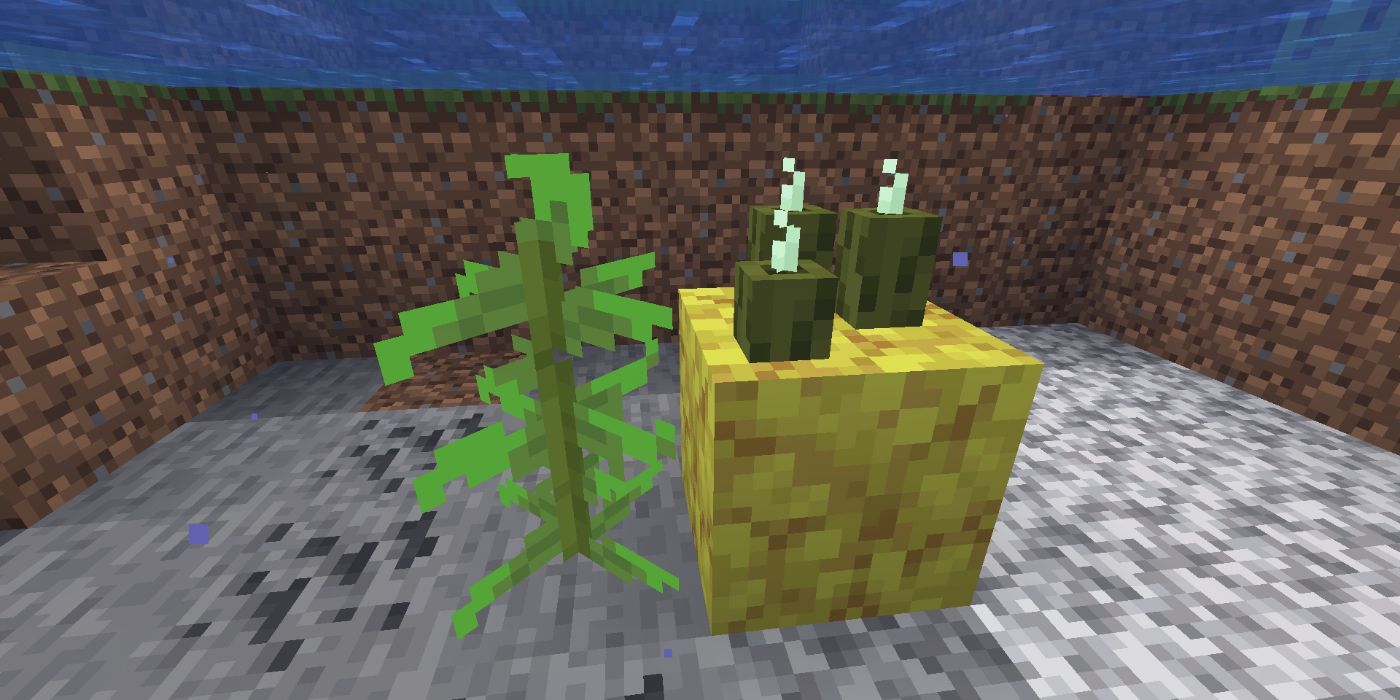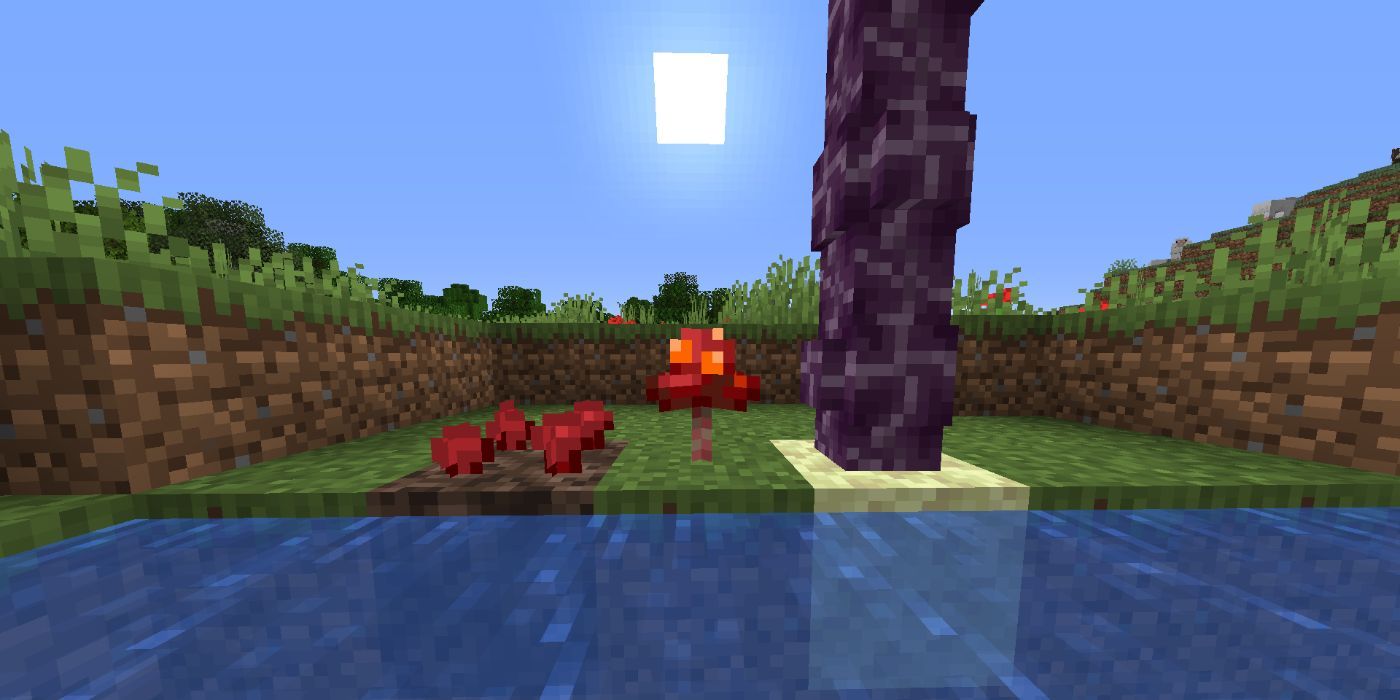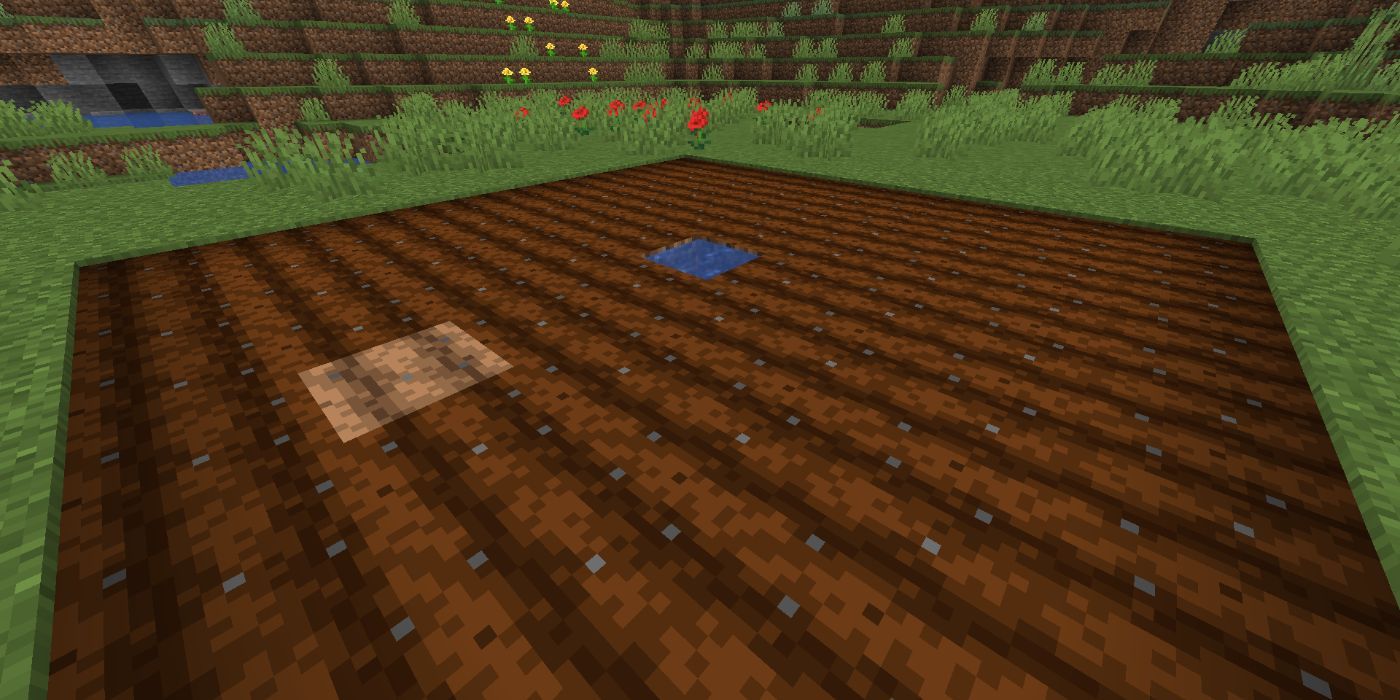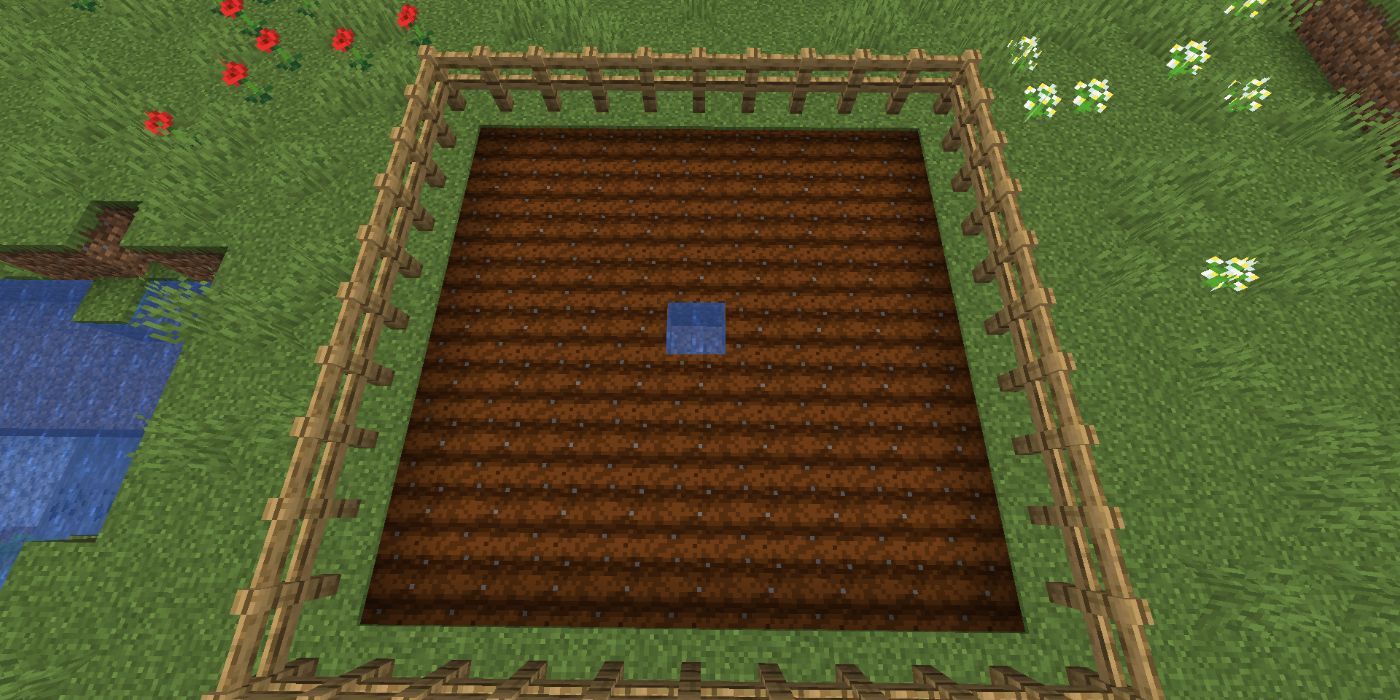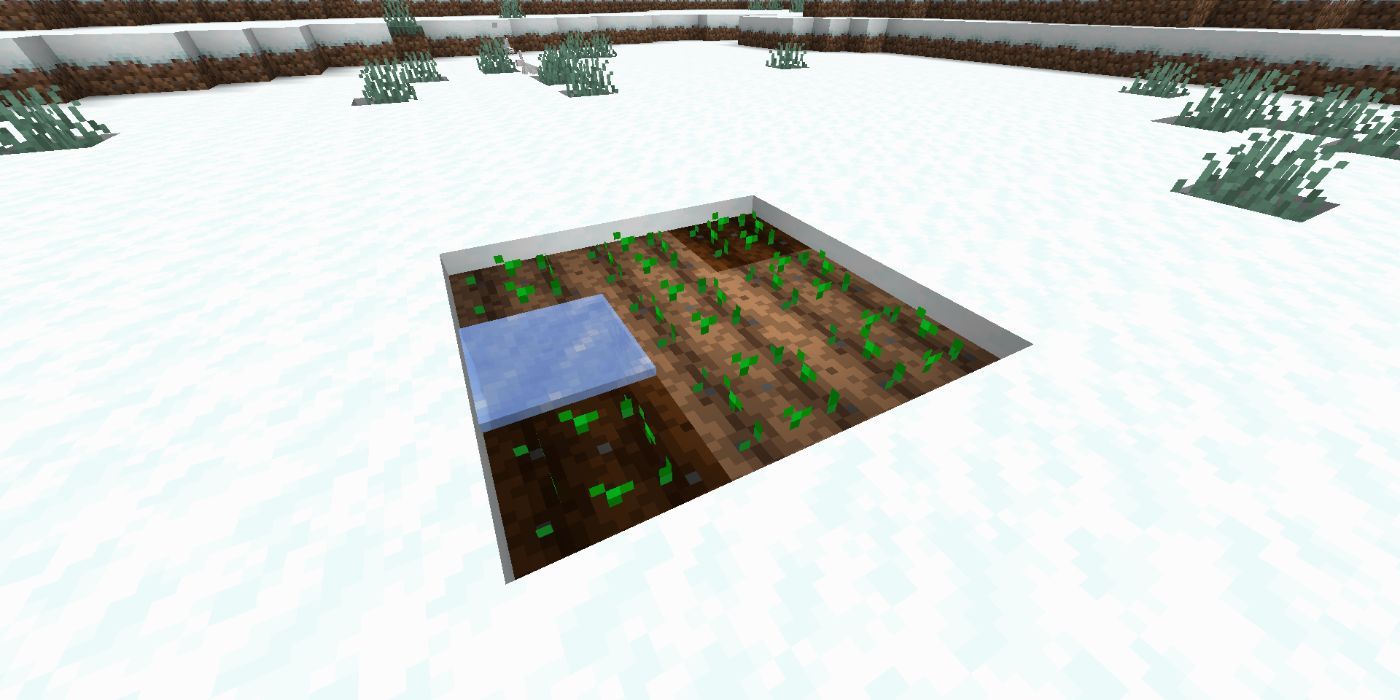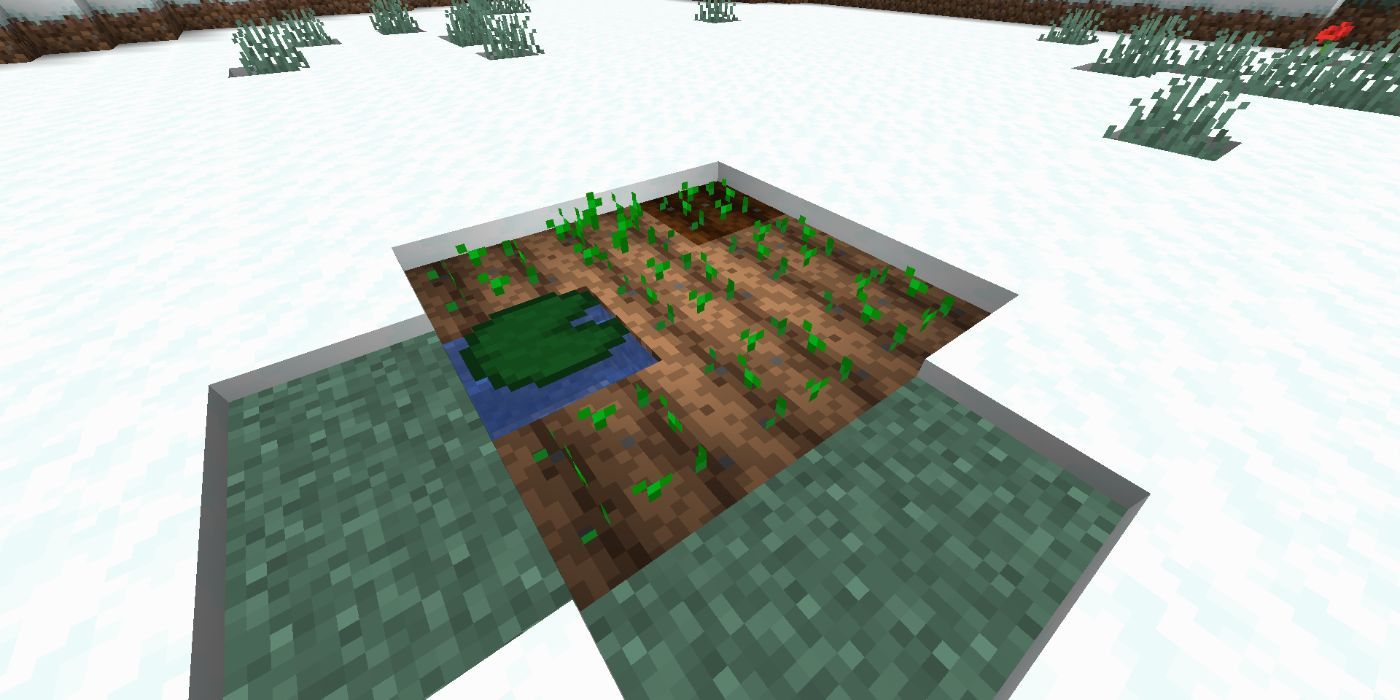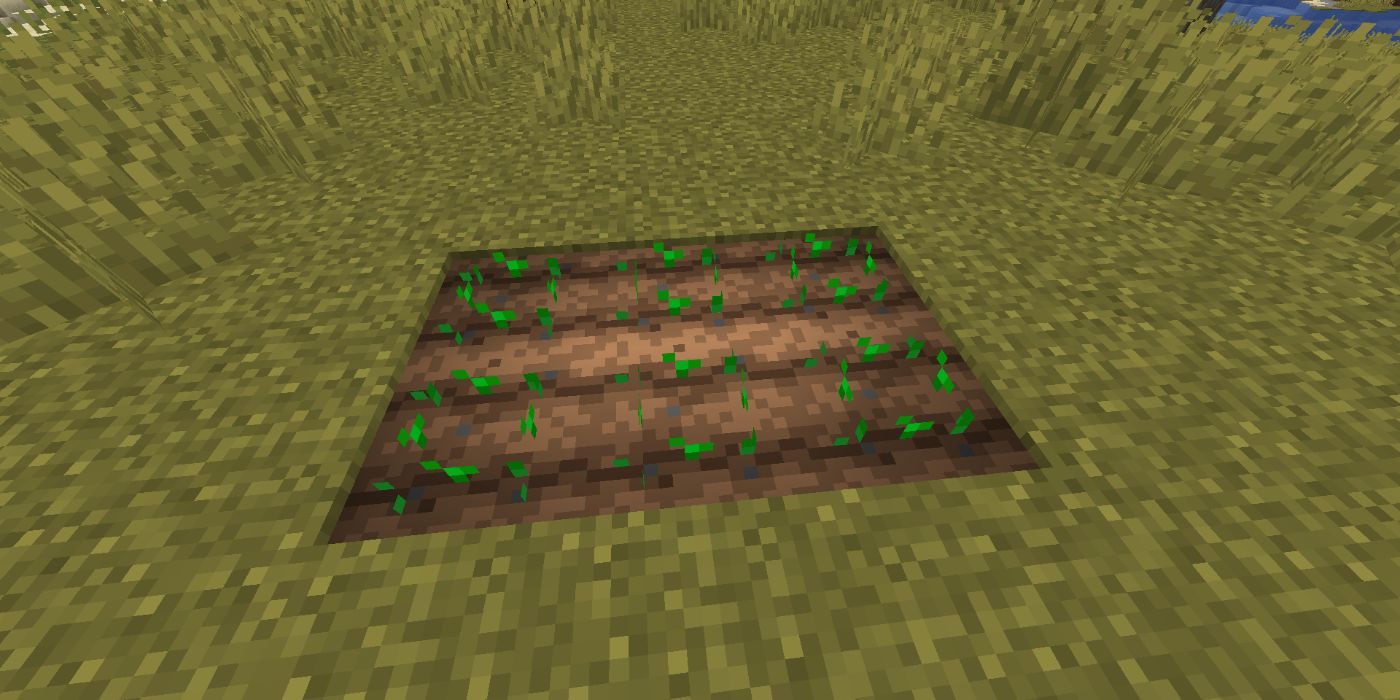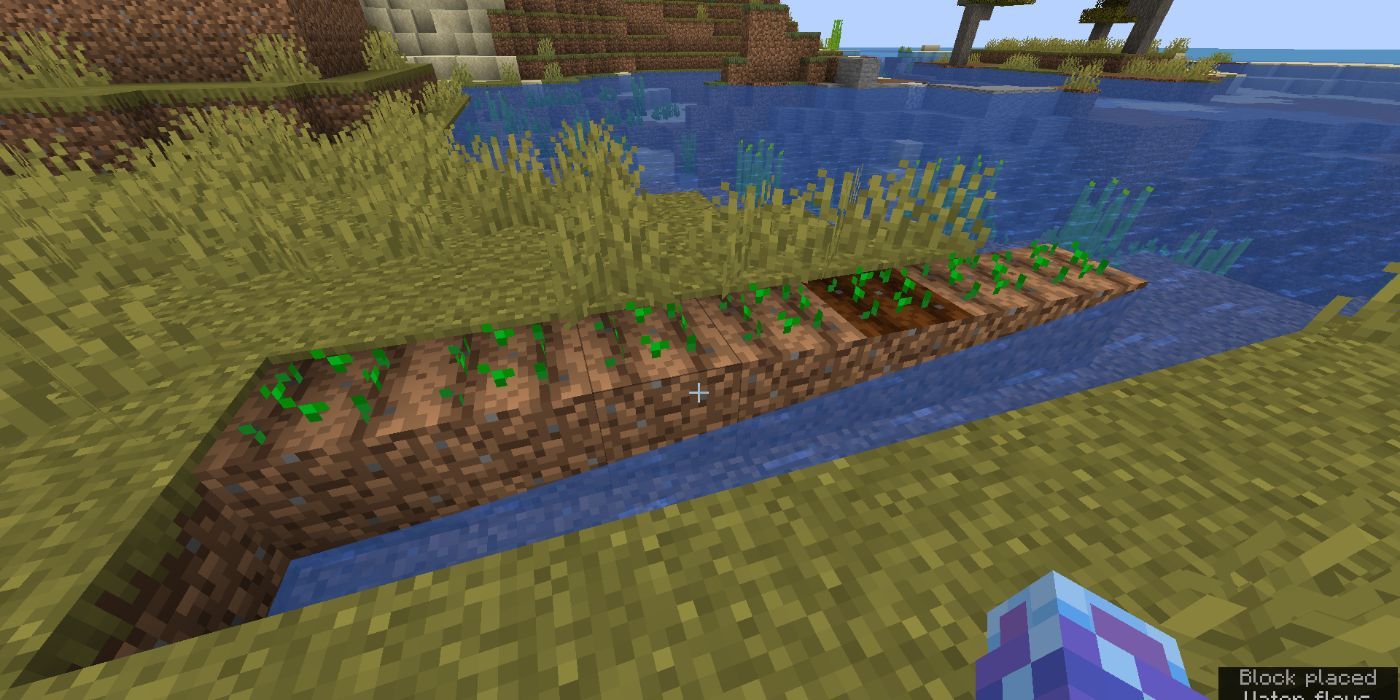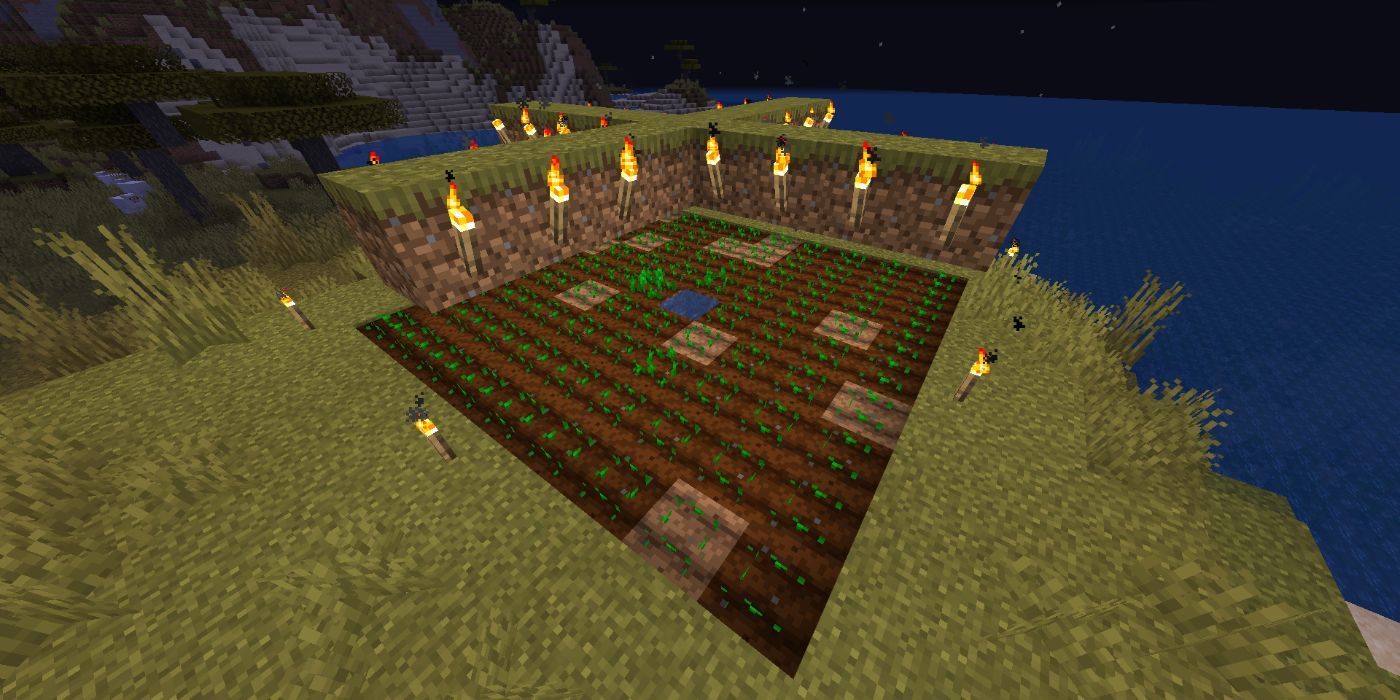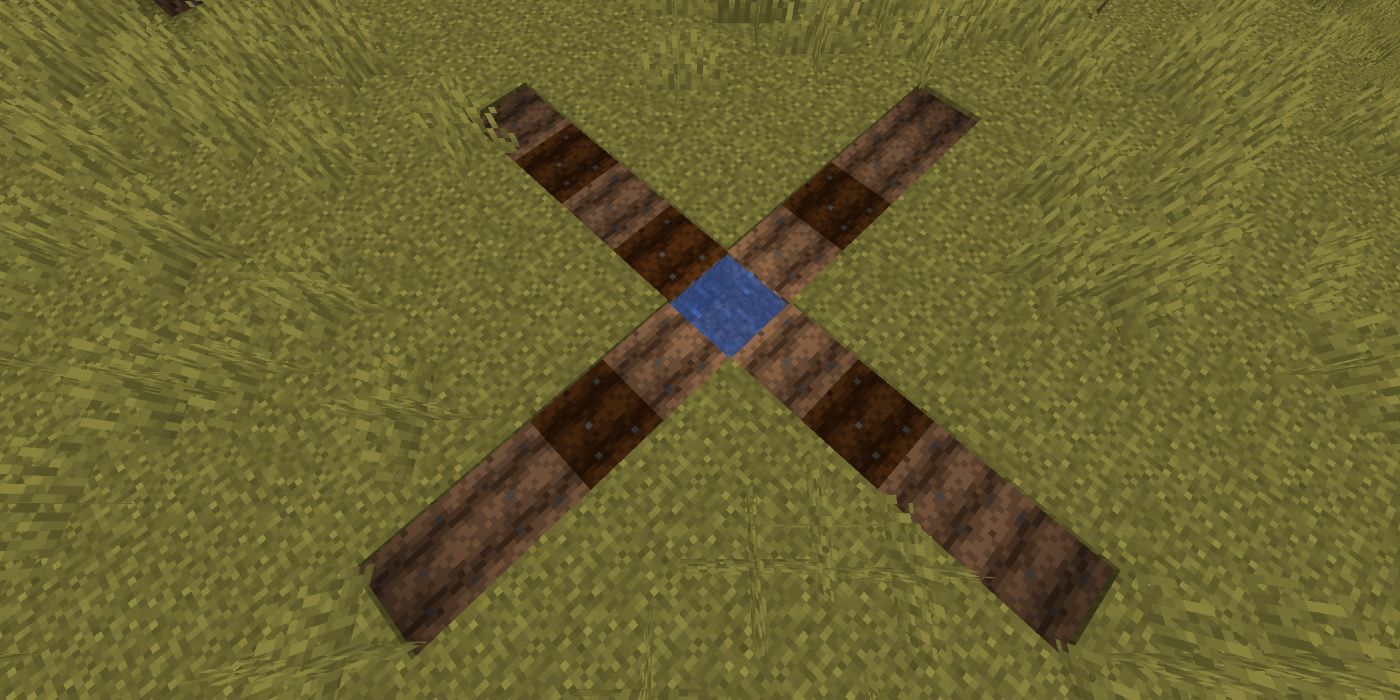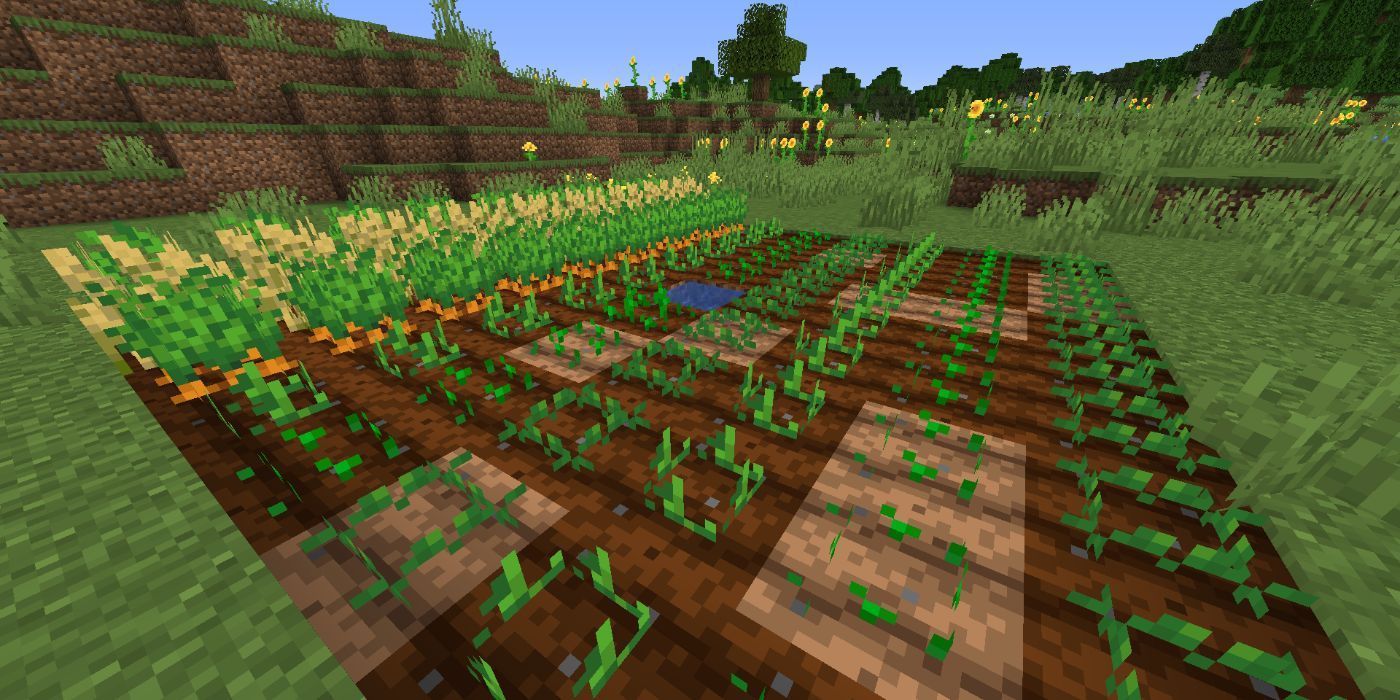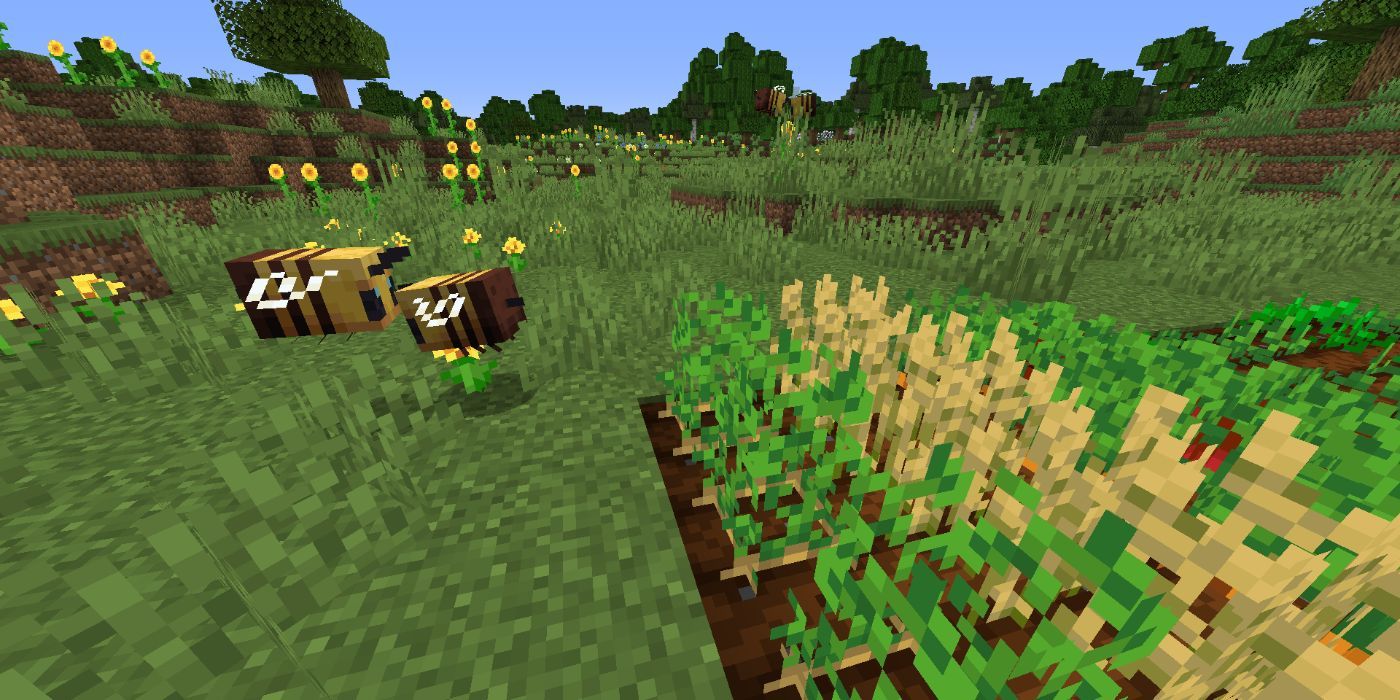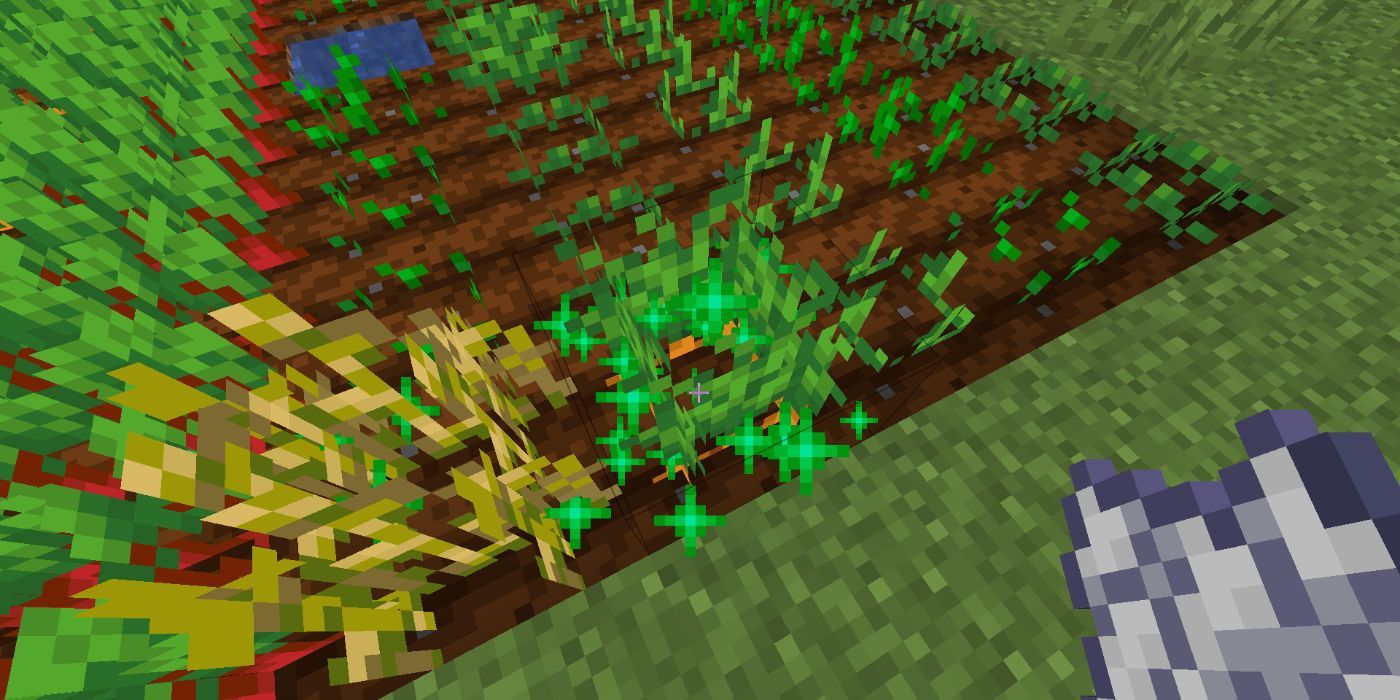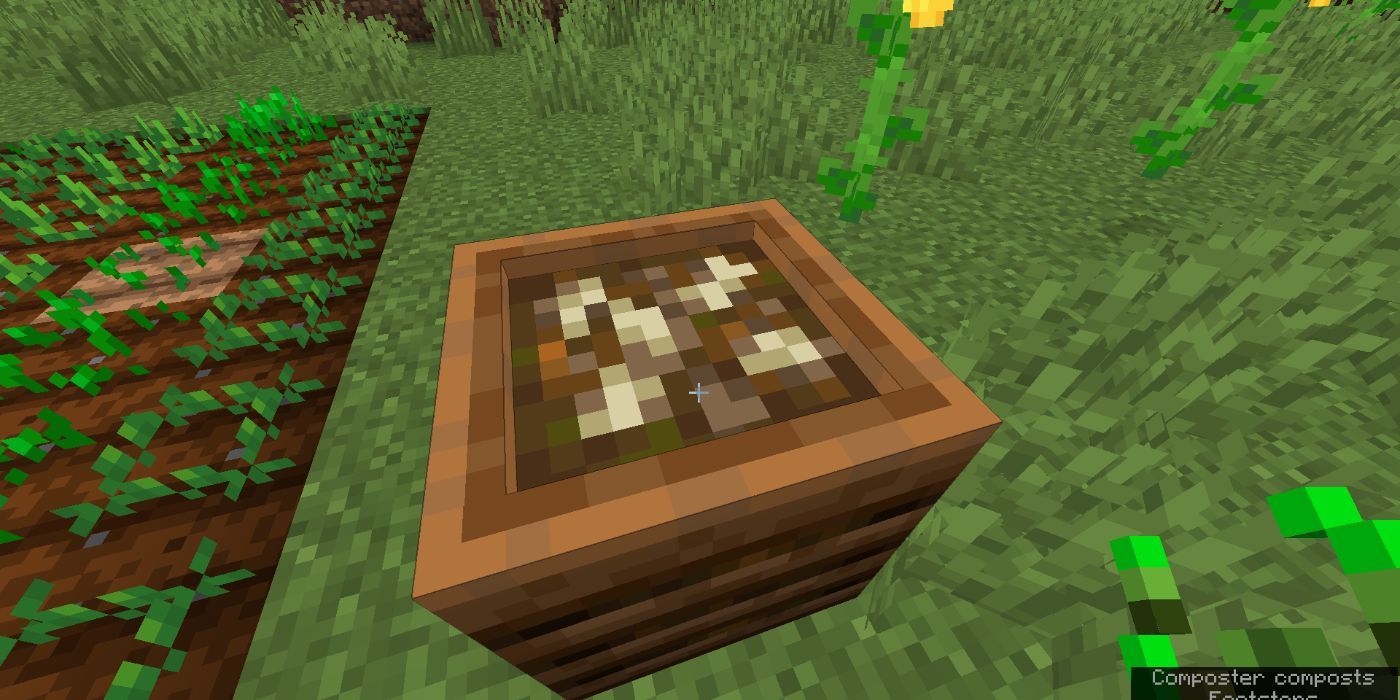The first priority in Minecraft survival is to find shelter and food. Rather than slaying all the animals in your vicinity, a more reliable plan is to start farming crops. Setting up a farm might take a bit of time, but given that it can feed both your and the nearby animals (therefore providing you with more livestock), it's an important mission to complete.
While the process is fairly straightforward, there are a lot of small mechanics that come into play when growing crops successfully. Just like in real life, a lot has to align for you to get the most out of your farm and harvest the maximum yield. Once you have yourself some water, plenty of seeds, and a basic stone hoe, you can start setting up your perfect farm with these tips.
All Growable Crops
There's a wide range of crops that can be grown in the game, but for the sake of simplicity, we'll only focus on the most important and versatile ones: wheat, potatoes, carrots, and beetroots. Due to the importance of breeding animals, wheat and carrots are crops every player should plant first in survival.
That being said, here are all the crops you can grow in the game and where you can find them, as well as how to grow them.
- Wheat: break grass to find seeds, plant on farmland.
- Carrot: found in villages and shipwrecks, plant on farmland.
- Potatoes: found in villages and shipwrecks, plant on farmland.
- Beetroot: found in villages, mineshaft chests, and End City chests. Plant on farmland.
- Pumpkin: found in mineshaft chests, in plains and forest biomes, plant on farmland with a free block next to it to grow on.
- Melon: found in mineshaft chests, jungle biomes, and savanna villages, plant on farmland with a free block next to it to grow on.
- Sugar cane: found near water, most commonly in desert biomes, plant on sand or dirt directly next to a water source.
- Bamboo: found in jungle biomes or shipwrecks as loot, plant on any type of dirt or grass.
- Cocoa beans: found in jungle biomes, plant on any type of tree trunk.
- Cactus: found in desert biomes and badlands, plant on any type of sand.
- Mushrooms: found in forests, caves, and the Nether. It must be planted in a dark area.
- Sweet berries: found in taiga biomes, plant on dirt.
- Kelp: found underwater, must be planted underwater.
- Sea pickle: found underwater, must be planted on a coral block.
- Nether wart: found in Nether fortresses and some Bastion chests and structures, must be planted on soul sand.
- Chorus fruit: found in the End, can be planted nearly anywhere.
- Nether fungus: found in the Nether, must be planted on nylium to grow.
Ideal Farmland
To grow the basic four crops (carrot, potato, wheat, and beetroot), you'll need to till dirt into farmland. First, pick an ideal spot for your new farm, which should be close to a source of water. Check the next part to see how close to water your crops need to be.
Your farmland should ideally be fenced off, or at least inaccessible to anyone or anything else but yourself. If mobs are allowed to enter your farmland, chances are they will trample your crops that are in the process of growing. Moreover, make sure you can access your farmland easily without having to jump or fall on any of the blocks, since this will turn them back into dirt and remove the seeds.
Good farmland also means you finding a good biome. Temperate biomes like forests and plains are great for farming, and crops will even grow in "hot" biomes like the desert and badlands, provided there's water nearby. However, when it comes to cold biomes, the issue is that water in farms tends to turn into ice.
To prevent this from happening, make sure to place lily pads or slabs above the water blocks. This will allow you to keep the water as a fluid, and your farm won't turn into a dry farm.
The Role Of Water
Water is a key factor in growing crops. In order for empty farmland to stay tilled, water needs to be nearby it at a maximum of four blocks horizontally or vertically on the same elevation, or one block above.
It's possible to dry farm by tilling the land and then quickly planting a seed. However, this is highly inefficient and not recommended for the best results. If you're looking to survive in an alternate dimension like the Nether, however, this is good to know.
The state of the water isn't important. This means that even if the water is flowing, any blocks within range can still be tilled and have crops grown on them. Since it's difficult to create water surfaces without a bucket, which is a rare item early on, you can simply dig out a small path from a river or beach to reroute some water to your farm.
Light Levels
Light is another highly important factor in crop growth. To achieve ideal growing conditions, crops should be in a light level of 9 or higher, at least during day time. This is why growing crops underground without proper lightning is practically impossible.
In order for crops to grow even faster, it's recommended to place torches or other illuminating blocks nearby them. This means that they can continue growing during nighttime, even when sky level light is under 9. To check the light levels in a specific area, press F3 to open the debug screen.
Growth Speed And Efficiency
The speed of growth for crops is determined by how ideal their growing environment is. If crops have water within four blocks and appropriate light levels during daytime and nighttime, they will grow significantly faster. However, there are still a few more ways to speed up the process.
If you're farming multiple crops, make sure to alternate the crop types by row. For example, the first row can be wheat, the second row can be carrots, and the third row can be potatoes, after which the pattern repeats itself again. This has been proven to boost crop growth in a noticeable way.
Since 1.15, bees can also be used to one's advantage. If you have bees nearby, try building your crop farm close to their beehive to ensure they also pollinate your crops. You'll need to place some flowers around as to attract the bees. Pollination will help your crops grow much faster.
Finally, the classic method to speed up the growth process is to use bone meal. Skeletons will drop bones when killed, which can then be turned into bone meal. In the Nether, bone blocks can be harvested with a pickaxe in a soul sand valley biome.
If neither of these methods are available, you can also build a composter and put in various plants and foods you don't need. Eventually, the top of the composter will have white dots, which can be harvested for some bone meal.

